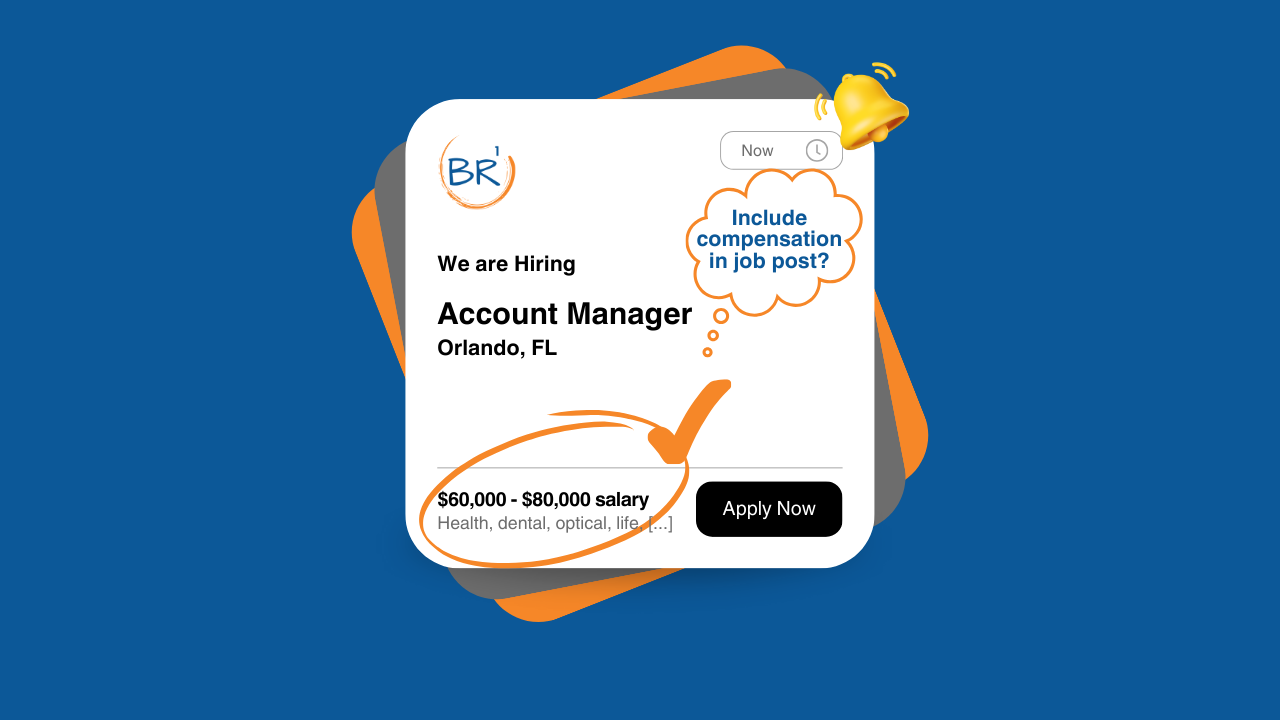In recruiting and hiring, few things are as frustrating as realizing—weeks or months after the start date—that a new hire wasn’t the right fit from the beginning. Often, the warning signs were there in the interview process: subtle hesitations, vague answers, or a lack of enthusiasm. But instead of digging deeper, those concerns went unspoken.
Here’s the truth: If you’re thinking it during the interview process, you should say it—or at least ask about it.
Today, we’ll explore why ignoring red flags can lead to costly mis-hires, how to tactfully bring up your concerns, and why addressing them early benefits both the company and the candidate.
.png)
The High Cost of Ignoring Red Flags
A “bad hire” isn’t just an inconvenience—it’s a drain on time, resources, and morale. A bad hire isn’t usually a bad person; it’s a bad fit. And that’s why it’s so important to address red flags before moving forward.
According to the U.S. Department of Labor, a bad hire can cost up to 30% of the employee’s first-year earnings, and that’s a very conservative estimate. When you factor in lost productivity, potential damage to client relationships, and the ripple effects on team morale, the true cost is often much higher.
But here’s what’s often overlooked: Many of these bad hires could have been avoided if hiring managers had simply voiced their concerns during the interview stage.
Some common examples:
- The candidate gives short, unenthusiastic answers about why they want the job.
- They hesitate when asked about relocating or commute requirements.
- Their salary expectations are vague—or don’t match your budget.
- They show little curiosity about the company or role.
- There’s a mismatch between their resume and how they describe their experience.
None of these are deal-breakers on their own, but they’re clues that require follow-up.
Why We Stay Silent (and Why That’s a Problem)
Even experienced hiring managers sometimes avoid addressing what’s on their mind. Common reasons include:
- Avoiding Awkwardness – No one likes to make the conversation uncomfortable.
- Fear of Being Wrong – “Maybe I’m overthinking it.”
- Wanting to Keep the Candidate Interested – “If I press too hard, they might back out.”
- Assuming We’ll Figure It Out Later – “We can clear it up in onboarding.”
The problem? By not addressing concerns now, you’re rolling the dice on a potentially poor fit—something that’s far more awkward, costly, and damaging down the road.
The Principle: If You’re Thinking It, Say It
The concept is simple: If something feels “off” or you have a question you’re hesitating to ask, voice it. Not aggressively. Not confrontationally. Just directly and professionally.
Instead of wondering: “Why do they seem hesitant about this role?”
Ask:
“I’m sensing some hesitation—can you tell me what’s on your mind about this opportunity?”
This approach accomplishes two critical things:
- It gives the candidate an opportunity to clarify or explain—maybe your assumption is wrong.
- It surfaces real concerns early, before you make a hiring decision.
Signs You Should Speak Up
Here are common scenarios where silence can lead to trouble later:
- Lack of Enthusiasm
If the candidate doesn’t seem genuinely excited about the role or company, that’s a signal worth exploring. Enthusiasm can’t be taught—it’s either there or it isn’t.
Ask:
“This position involves a lot of responsibility—how does that align with what you’re looking for right now in your career?”
- Hesitation About Role or Responsibilities
If they seem unsure about core parts of the job, dig into why.
Ask:
“You paused when we discussed the travel requirements—how do you feel about that aspect of the role?”
- Salary or Compensation Misalignment
If your salary range isn’t what they’re expecting, better to know now than lose them to a counteroffer later.
Ask:
“You mentioned wanting to grow your compensation—our range for this role is $X to $Y. How does that work for you?”
- Gaps or Inconsistencies in Experience
If their resume says one thing and their description says another, clarify before you assume.
Ask:
“On your resume, it shows you led a team of 12, but earlier you mentioned managing 4 people—can you walk me through that?”
- Cultural Mismatch
If you sense they might not mesh with the company’s pace, values, or style, address it.
Ask:
“Our environment is very fast-paced with shifting priorities—how do you typically handle that kind of change?”
How to Bring It Up Without Turning the Candidate Off
Some hiring managers worry that asking tough questions will scare off a great candidate. The reality? The right candidate will appreciate your transparency. In fact, it often builds trust.
Here are a few tips:
- Lead with Curiosity, Not Judgment
Use open-ended questions that invite discussion, not defensiveness.
Instead of: “Why don’t you seem excited?”
Try:
“I’d like to hear more about what excites you most about this opportunity.”
- Use “I” Statements
This frames the concern as your perspective, not an accusation.
“I’m getting the sense you might have some concerns about relocating—what’s your take on that?”
- Listen More Than You Talk
Once you raise the concern, give them space to respond fully.
- Be Transparent About the Role
Sometimes the best way to get honesty is to lead with it yourself. If there’s a tough part of the job, bring it up and ask for their thoughts.
The Benefits of Addressing Concerns Early
- Better Hiring Decisions
When you address what’s on your mind, you get a clearer picture of the candidate’s fit—skills, motivation, and cultural alignment.
- Improved Candidate Experience
Candidates appreciate honesty. They’d rather know now if there’s a potential deal-breaker than after they’ve accepted the job.
- Stronger Employee Retention
When expectations are set clearly upfront, there are fewer surprises later—leading to better long-term retention.
- Faster Hiring Process
By surfacing concerns early, you avoid investing more time in candidates who aren’t the right fit.
Real-World Example
A client once interviewed a candidate who seemed perfect on paper: years of experience, great references, and impressive interview answers. But the hiring manager noticed the candidate’s tone shifted when discussing the commute. Instead of addressing it, the manager assumed they’d “work it out” later.
Three months after hiring, the employee resigned—citing the commute as the main reason. The role had to be re-filled, costing thousands in recruiting expenses and lost productivity.
Had the hiring manager simply asked during the interview, the candidate might have admitted their concern—and the company could have avoided the mis-hire entirely.
A Two-Way Street
It’s worth noting: This principle works both ways. Just as hiring managers should voice their concerns, candidates should feel comfortable doing the same (or uncomfortable but do it anyways).
Encouraging open, two-way communication during the hiring process creates an environment where both sides can make informed decisions. If a candidate doesn’t feel your company is the right fit, it’s better to know before the offer stage.
Action Steps for Your Next Interview
- Before the Interview:
- Review the resume for any gaps or inconsistencies to clarify.
- Note potential challenges—location, schedule, responsibilities.
- During the Interview:
- Pay attention to verbal and non-verbal cues.
- If something feels off, pause and ask about it.
- Use open-ended, curiosity-driven questions.
- After the Interview:
- If you still have doubts, address them before moving forward.
- Involve other interviewers to see if they noticed the same concerns.
Final Thought
Hiring is as much about what you uncover as it is about what you assume. If something in your gut says, “That didn’t sound right,” don’t ignore it. Address it—kindly, directly, and professionally.
You’ll save your company time, money, and frustration. And you’ll give candidates the respect of a transparent hiring process, which benefits both sides.
Remember: It’s better to learn the truth before you hire someone than to manage the fallout of a bad hire.
Call to Action:
If you found this information helpful, please take a second to subscribe wherever you enjoy content. We share short, right-to-the-point content like this regularly to help business leaders build stronger teams.
At BR1, we help companies hire and retain the right people for the right roles—minimizing the risk of costly mis-hires. If you want a hiring process that’s both efficient and thorough, BR1 can help. Contact us today to strengthen your recruiting strategy and build a stronger team!




